October 17, 2025

The article titled "10 Strategies to Boost ABA Learning and Student Engagement" presents effective methods designed to enhance learning and engagement within the realm of Applied Behavior Analysis (ABA) education. It highlights various strategies, such as:
These tailored interventions and structured assessments are shown to significantly improve student outcomes while fostering an engaging learning environment. By focusing on these strategies, educators can better meet the diverse needs of their students and promote a more effective learning experience.
In a landscape where the demand for effective educational strategies is ever-increasing, the quest for methods that enhance learning and engagement in Applied Behavior Analysis (ABA) has become more critical than ever. This article unveils ten innovative strategies designed to not only boost ABA learning but also captivate student interest, ensuring that educational experiences are both meaningful and impactful. Yet, with so many approaches available, how can educators determine which strategies will resonate most with their students and lead to lasting success?
The demand for Board Certified Behavior Analysts (BCBAs) is projected to grow by an impressive 22% through 2031. In this rapidly expanding field of ABA learning, Hire ABA stands out as a specialized recruitment platform that effectively connects BCBAs with premier job opportunities. By streamlining the hiring process, Hire ABA enables qualified professionals to swiftly identify roles that align with their expertise and career aspirations.
This targeted approach not only enhances the job-seeking experience but also significantly aids employers in quickly locating the right candidates. Are you struggling to fill open BCBA positions? You’re not alone; 76% of employers report facing challenges in this area. By facilitating efficient job matching, Hire ABA fosters a more engaged and productive workforce within the ABA learning therapy sector.
The importance of specialized recruitment platforms like Hire ABA cannot be overstated. They play a crucial role in addressing the unique challenges of the industry, ultimately contributing to a more dynamic and responsive job market. Both professionals and organizations benefit from this innovative solution. Don’t miss out on the opportunity to connect with top talent—leverage Hire ABA today and transform your hiring process.

Discrete Trial Teaching (DTT) stands as a pivotal method in skill acquisition, breaking down complex skills into manageable components to facilitate structured learning. Each trial adheres to a systematic five-step process:
This organized approach not only clarifies expectations but significantly enhances learner engagement through consistent reinforcement. Research shows that when DTT is effectively implemented—characterized by active caregiver participation and full utilization of recommended hours—up to 90% of individuals can achieve substantial progress.
Furthermore, educational settings that are well-organized, featuring calm areas and visual aids, foster greater involvement. Learners are more likely to engage actively when they understand the objectives and receive timely feedback. Effective application of DTT within classrooms has demonstrated that students are better equipped to transfer skills across various contexts, leading to improved outcomes in both academic and social realms. Continuous data collection throughout DTT sessions is essential for monitoring progress and adapting teaching strategies as needed, ensuring that each child's unique educational style is acknowledged and supported.
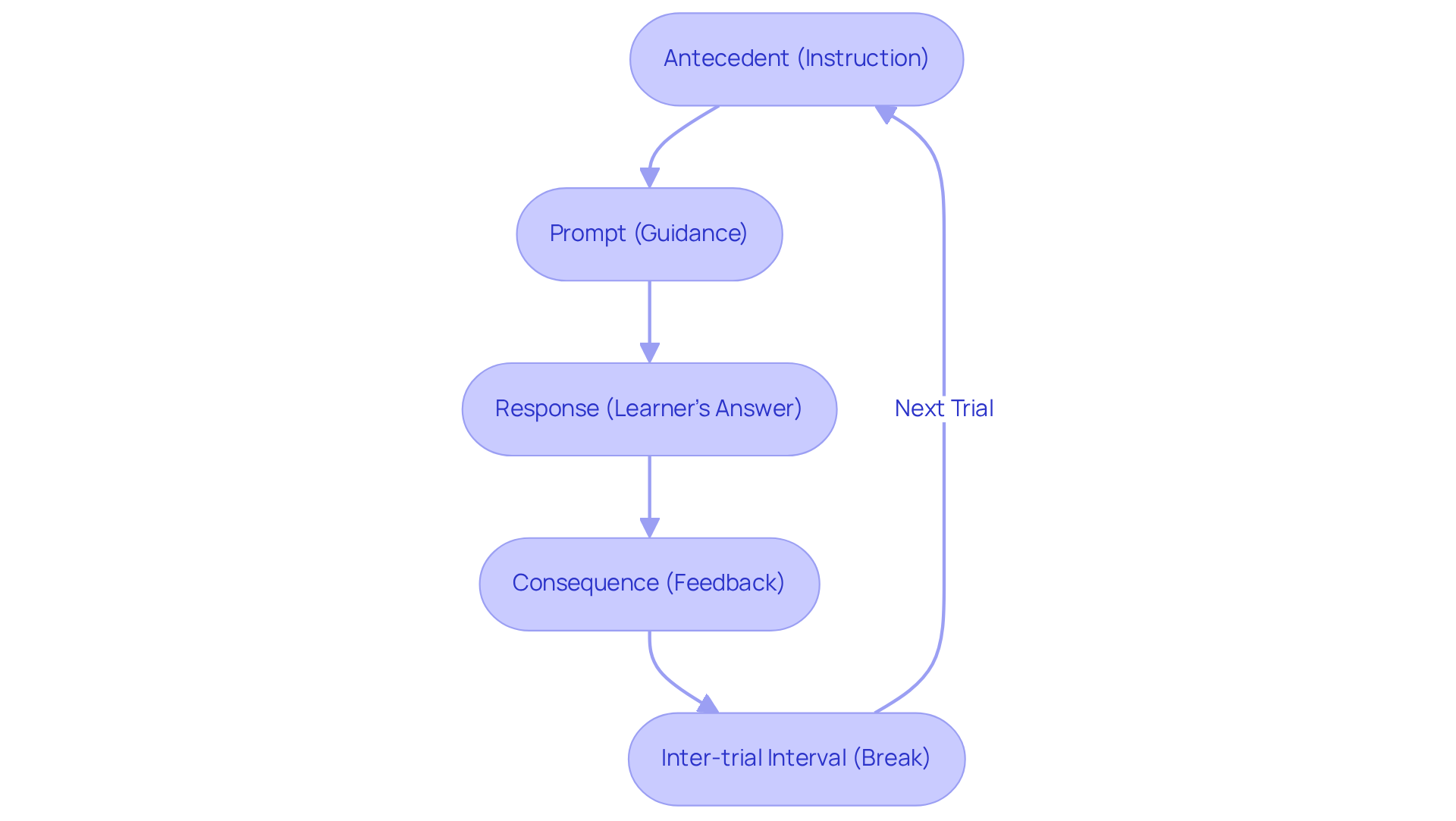
Naturalistic Teaching employs everyday situations to impart skills within meaningful contexts. By weaving educational opportunities into natural interactions, educators significantly enhance student engagement. This method not only fosters spontaneous interaction but also nurtures essential social skills, making the experience feel authentic rather than forced.
Research, including studies by Smith and Jones (2019) and Johnson et al. (2020), demonstrates that Naturalistic Teaching strategies result in substantial improvements in communication, social abilities, and adaptive behavior among children and teens with autism. Educators have noted that learning in real-life contexts not only boosts engagement but also facilitates a deeper understanding of skills, enabling students to generalize their knowledge effectively.
For instance, integrating teaching moments during meals or play transforms routine activities into meaningful educational experiences. This approach reinforces the notion that education flourishes when it is embedded in daily life, ultimately enhancing outcomes in ABA learning therapy settings—an aspect of particular interest to healthcare employers.
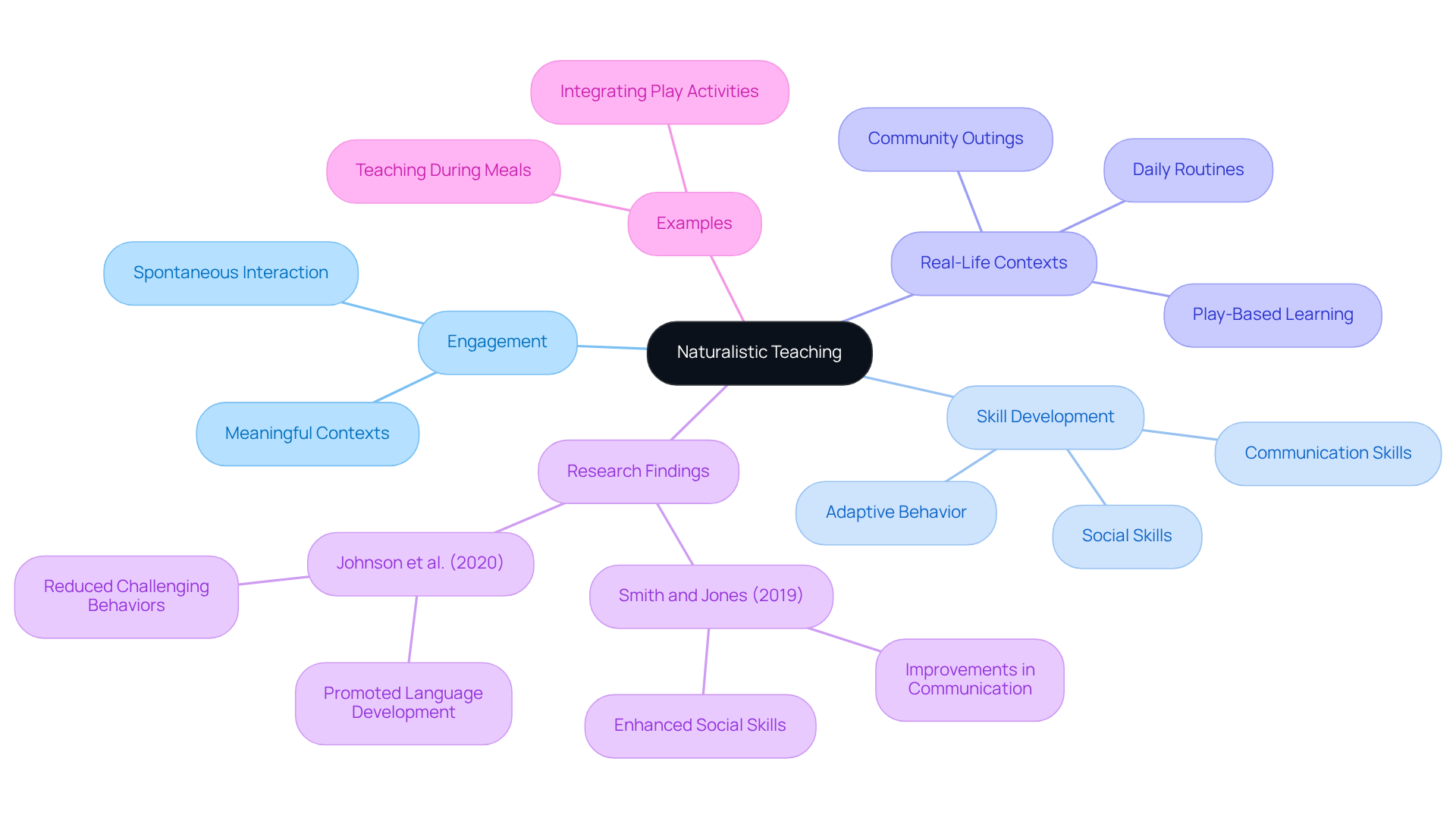
Pivotal Response Treatment (PRT) is a transformative approach designed to enhance pivotal areas such as motivation, self-management, and social initiations. By concentrating on these essential aspects, educators can significantly boost engagement and improve educational outcomes. PRT empowers learners to take an active role in their education, fostering increased motivation and participation. This method not only addresses the immediate needs of students but also lays the groundwork for long-term success in their educational journeys.
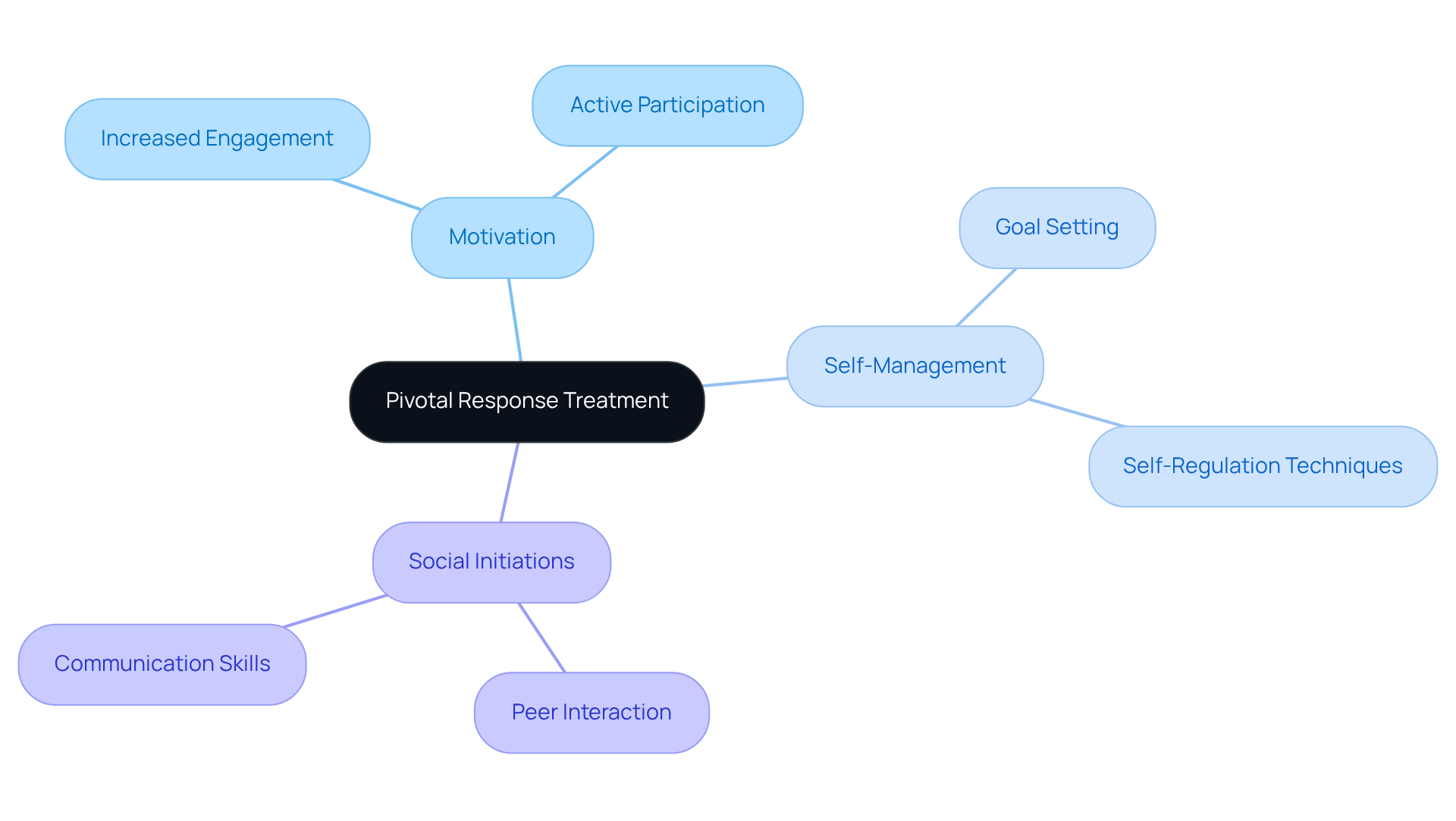
A Token Economy serves as a powerful behavioral management system, where individuals earn tokens for demonstrating desired behaviors. These tokens can be exchanged for various rewards, establishing a clear incentive for engagement and participation. This method not only inspires learners but also fosters an understanding of the relationship between their actions and the resulting consequences, thereby reinforcing positive behavior.
Research indicates that implementing Token Economies has resulted in significant enhancements in learner motivation and behavior, particularly within settings that utilize ABA learning therapy. For instance, studies have shown that individuals engaged in Token Economy systems exhibit increased participation and reduced disruptive behaviors, contributing to a more conducive educational environment.
Educators have noted that when learners are rewarded for their efforts, they are more inclined to remain focused and committed to their learning objectives. As one educator articulated, 'Reward systems such as Token Economies not only motivate learners to strive for success but also help them recognize the value of their efforts in achieving their goals.'
Recent success stories further exemplify the efficacy of Token Economies in ABA learning, illustrating how these systems can transform learner experiences and outcomes in educational contexts.
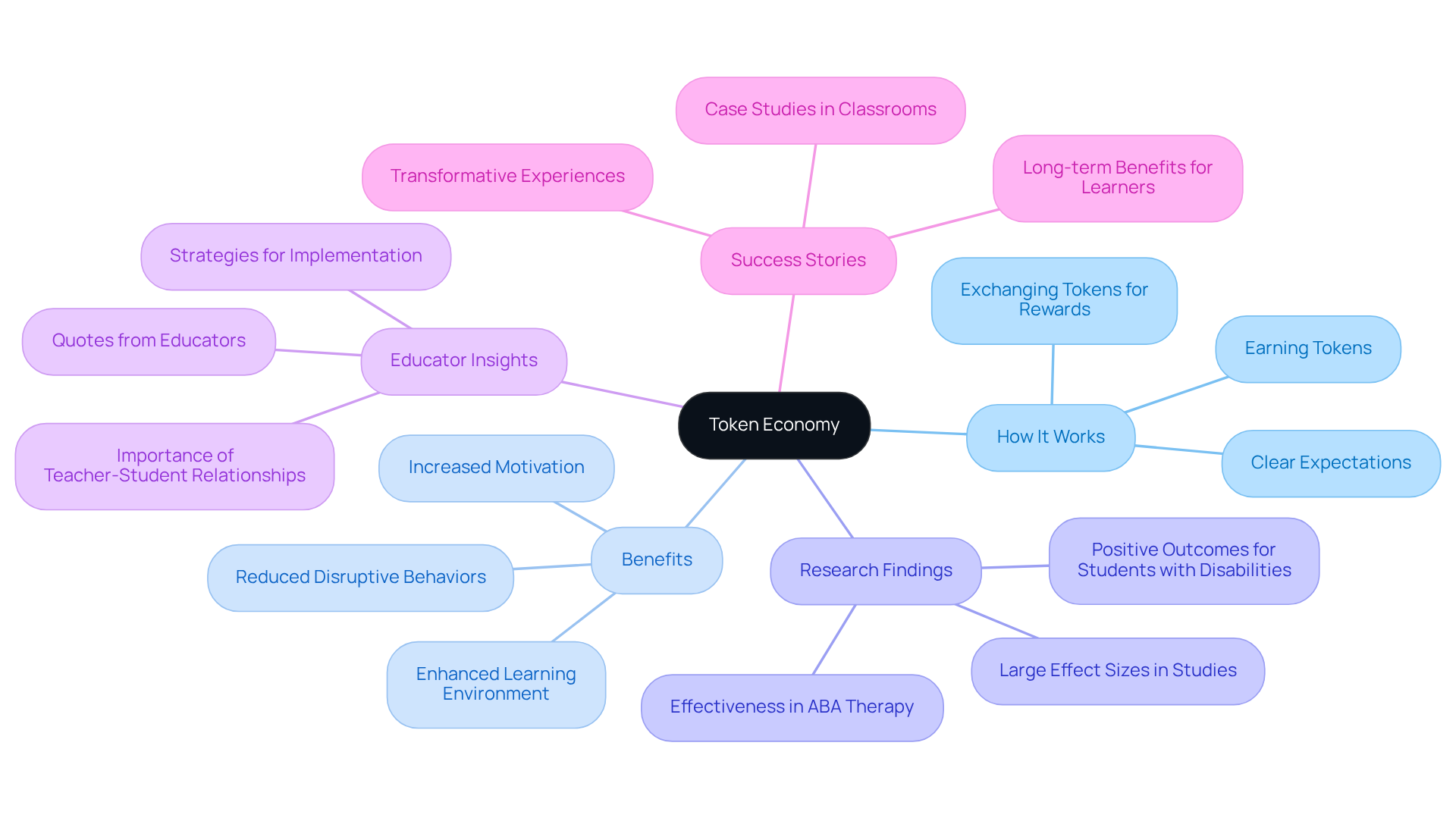
Contingent Observation stands out as a powerful strategy in ABA learning, allowing individuals to observe their peers engaging in various tasks or activities. This method not only fosters understanding through modeling but also cultivates significant peer interactions, allowing individuals to gain valuable insights from one another. Research indicates that children participating in ABA learning show remarkable improvements in social interactions, including eye contact and appropriate play behaviors, particularly when peer interactions are integrated into their learning experiences.
For example, a study revealed that 47% of participants in the ABA program achieved normal intellectual functioning, in stark contrast to only 2% in a control group. By nurturing a cooperative atmosphere, educators can enhance engagement and social skills among students, ultimately leading to improved academic performance and emotional well-being. The structured nature of these observations ensures that children learn to interpret social cues and develop empathy, both of which are essential for their overall development.
As one Board-certified behavior analyst pointed out, 'Their guidance in structuring activities involving peers can lead to more successful outcomes in developing friendships and improving social abilities.' Thus, Contingent Observation not only reinforces skills acquired in therapy but also promotes the application of these skills in various environments, enhancing the sustainability of progress.
To effectively implement this strategy, healthcare employers should prioritize incorporating structured peer interactions into their programs, providing children with ample opportunities to practice and refine their social skills.
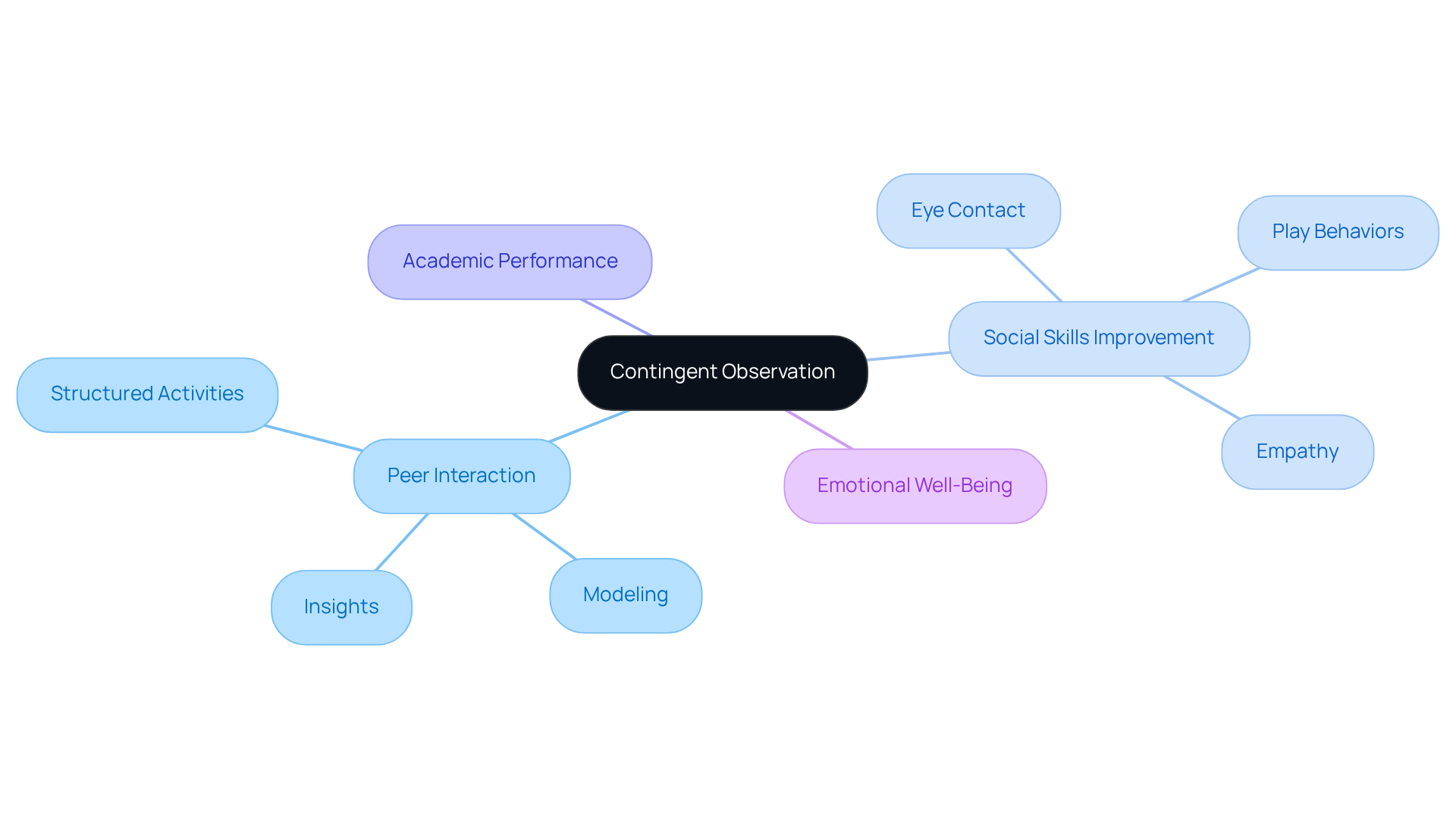
Visual supports, including charts, pictures, and diagrams, are essential tools that significantly enhance understanding and engagement in educational settings. These resources enable students to visualize concepts, transforming abstract ideas into concrete representations. By integrating visual aids into their lessons, educators can effectively address diverse learning styles, ultimately fostering greater engagement in the classroom.
Are you leveraging these powerful tools to their fullest potential? Elevate your teaching strategies by incorporating visual supports and witness the transformative impact on your students' learning experiences.
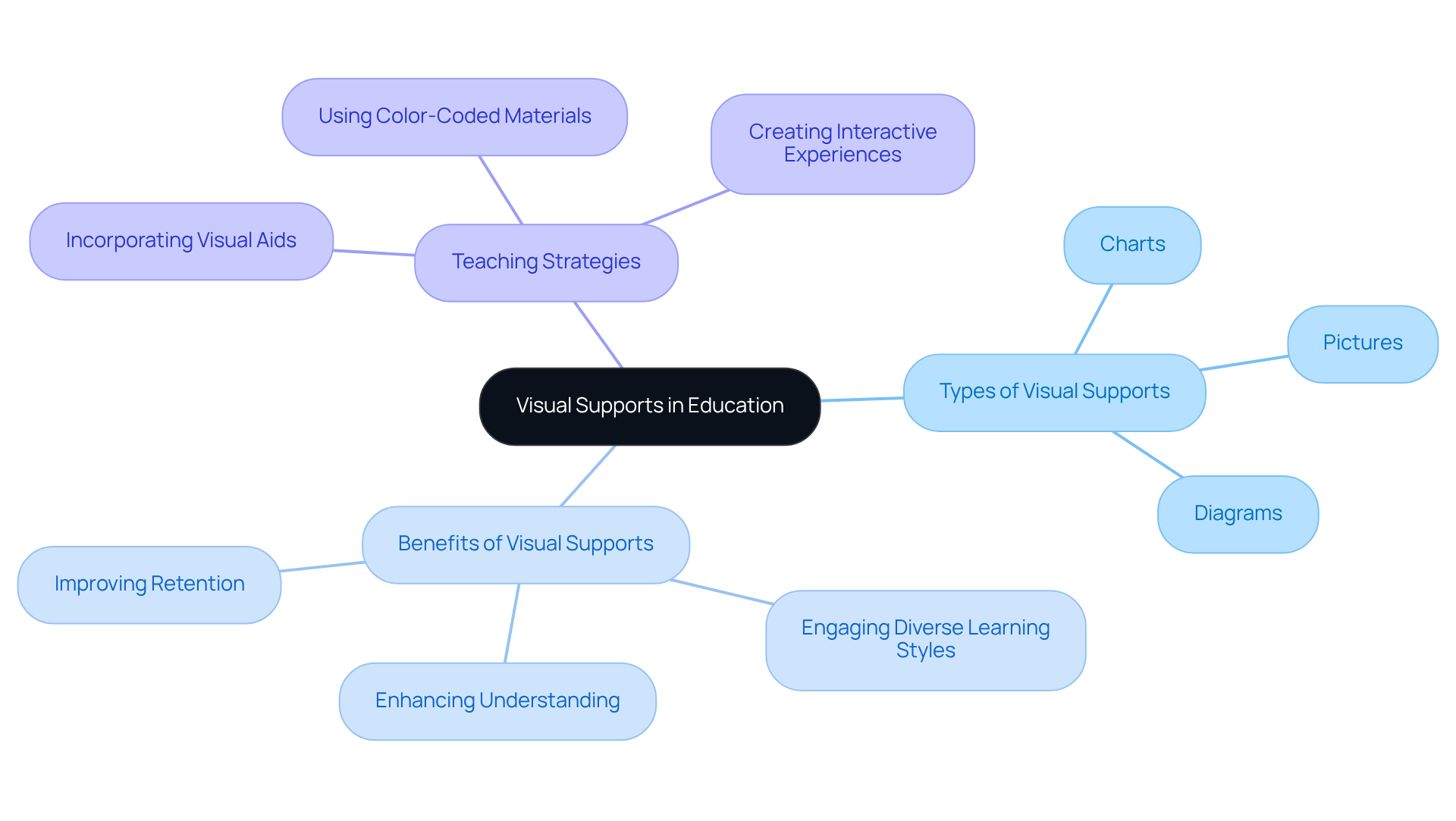
Play-based strategies harness the innate tendency of children to engage in play as a vehicle for education. By embedding educational content within play activities, educators cultivate a dynamic and enjoyable learning environment. This approach not only enhances student motivation but also nurtures creativity, problem-solving skills, and essential interpersonal abilities.
Research indicates that play-based education can lead to an average improvement of four additional months in academic outcomes, underscoring its efficacy in educational settings. Moreover, the decline of unstructured play has been linked to increasing rates of childhood anxiety and depression, highlighting the critical need for play in educational frameworks.
As Dr. Stuart Brown points out, play fosters neural connections that boost creativity, problem-solving, and emotional regulation. Incorporating structured outdoor activities that promote climbing, running, and jumping further bolsters the development of motor skills vital for academic achievement.
Striking a balance between child-initiated play and structured activities is essential to meet children's educational needs. Ultimately, integrating play into education not only enriches the academic experience but also aligns with children's natural inclination to explore and discover, transforming learning into an engaging adventure and establishing it as a crucial element of effective ABA learning.
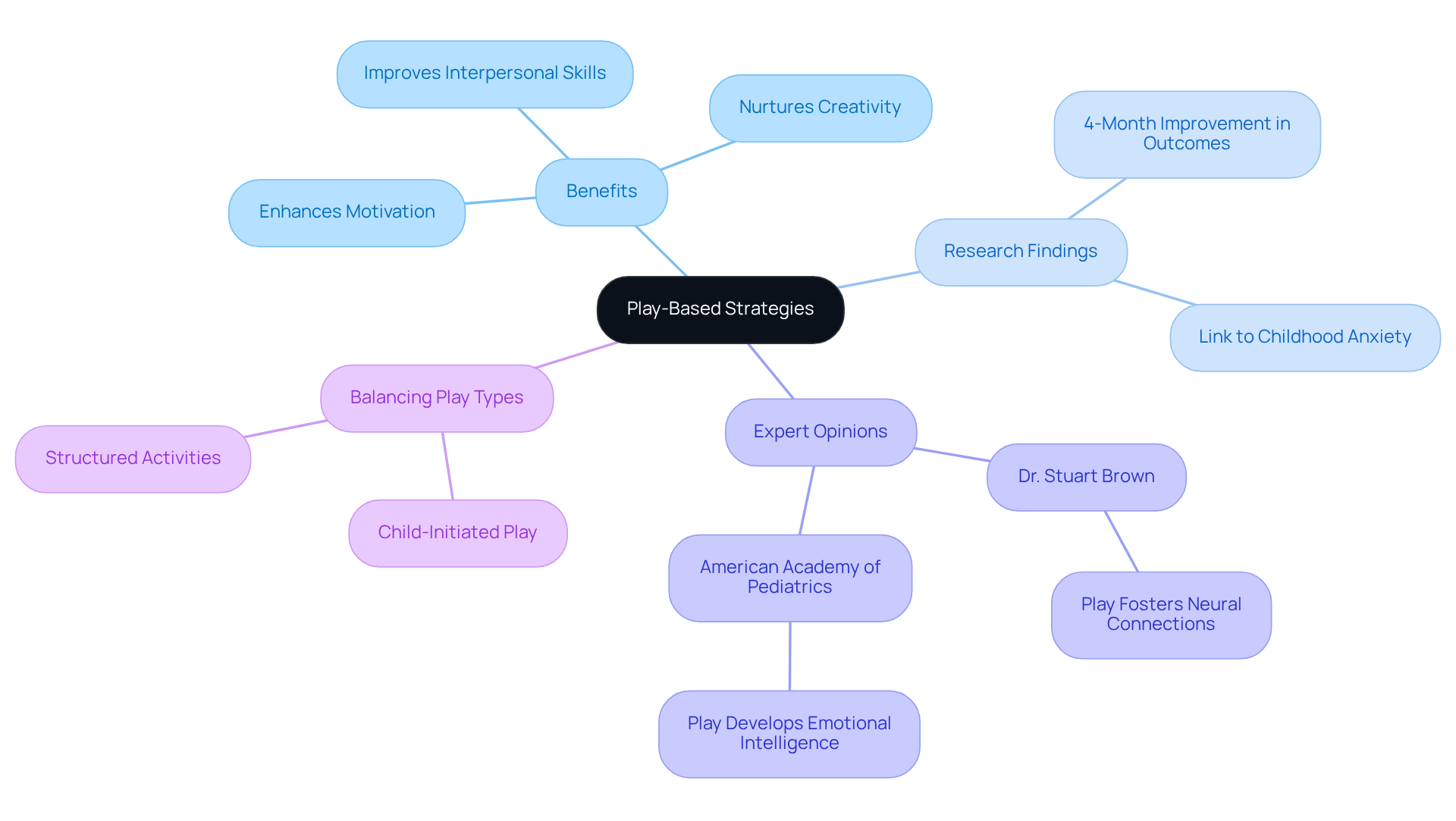
Personalized interventions are paramount for tailoring teaching strategies to meet the distinct requirements of each learner. By thoroughly evaluating individual strengths and challenges, educators can create customized strategies that not only boost engagement but also enhance educational results. This tailored attention fosters a nurturing educational atmosphere where individuals feel appreciated and comprehended.
Research indicates that personalized education can lead to a:
This demonstrates the effectiveness of these strategies. Moreover, 76% of educators believe that individualized education improves learner engagement, emphasizing its essential role in promoting a positive educational experience. Institutions that adopt personalized learning strategies have observed a 20% rise in learner interest, further reinforcing the case for customized methods.
As Dr. Ross Greene aptly noted, challenging behavior often arises when the demands placed on a child exceed their adaptive skills, underscoring the necessity of tailored support. Furthermore, schools employing predictive analytics have witnessed a 30% decline in early dropouts, highlighting the effect of data-driven strategies.
To effectively execute tailored education, educators should routinely evaluate pupil progress and modify their teaching strategies accordingly, ensuring that each individual receives the assistance they require to excel academically and socially.
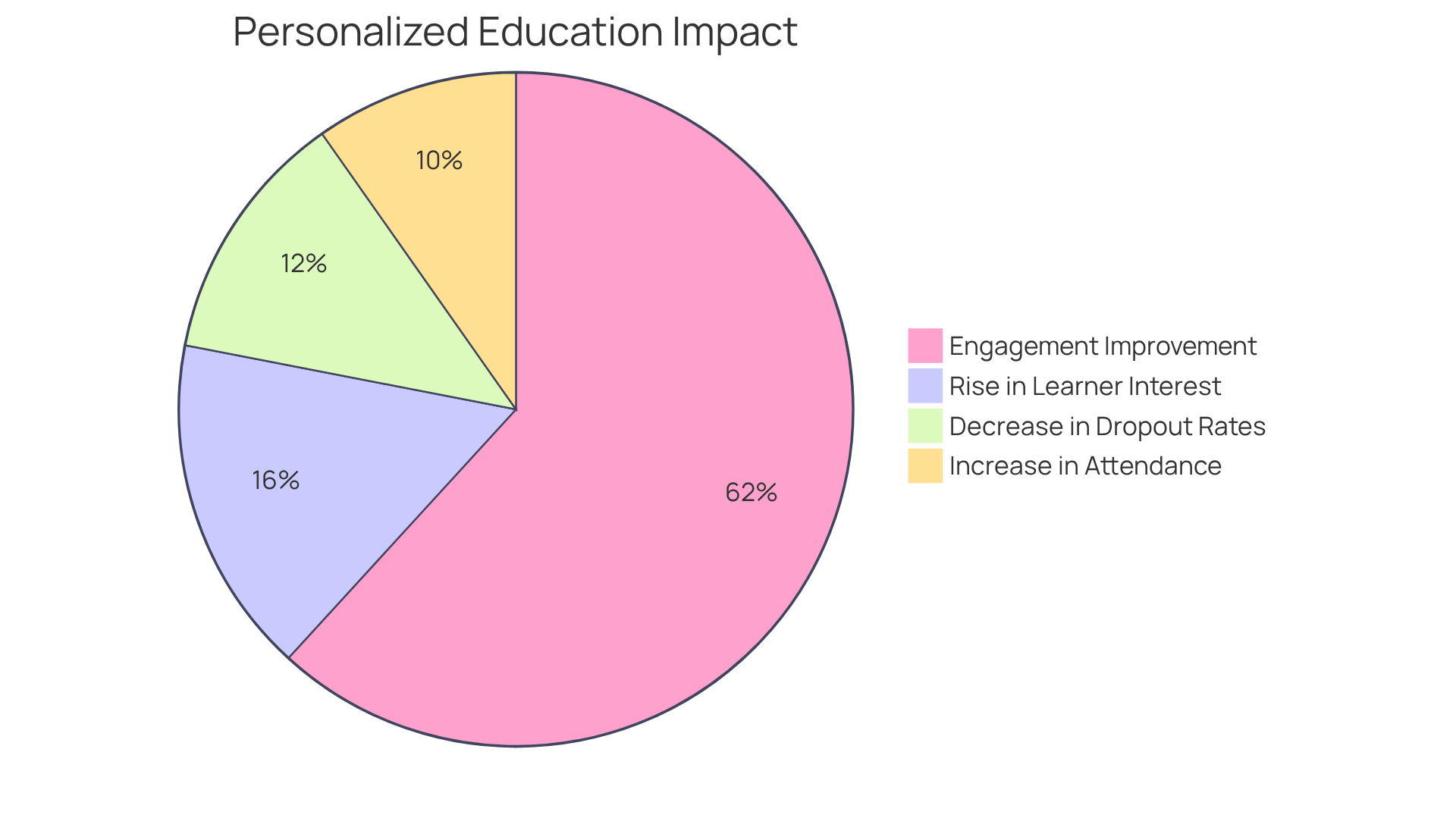
Ongoing assessment is essential in Applied Behavior Analysis (ABA) education, as it involves the continuous evaluation of progress and engagement. By utilizing formative assessments, educators can gather valuable data that guides their teaching strategies, enabling timely adjustments to address individual educational needs. This proactive strategy not only maintains engagement but also promotes a dynamic educational atmosphere where teaching methods adapt based on immediate feedback.
Research shows that effective formative evaluations can greatly improve learning results in ABA learning, as they enable educators to customize their strategies to better assist learner development. As Lisa Katz, Vice President of Research and Analytics at Discovery Education, stated, "AI is really exciting. But it’s not just about the innovation, and the benefits of those innovations. It’s also about preparing teachers to feel comfortable and have the support that they need to be able to use those innovations in the classroom."
This highlights the importance of providing educators with the necessary tools and training to adapt their teaching methods based on assessment results, ultimately maximizing student engagement and success.
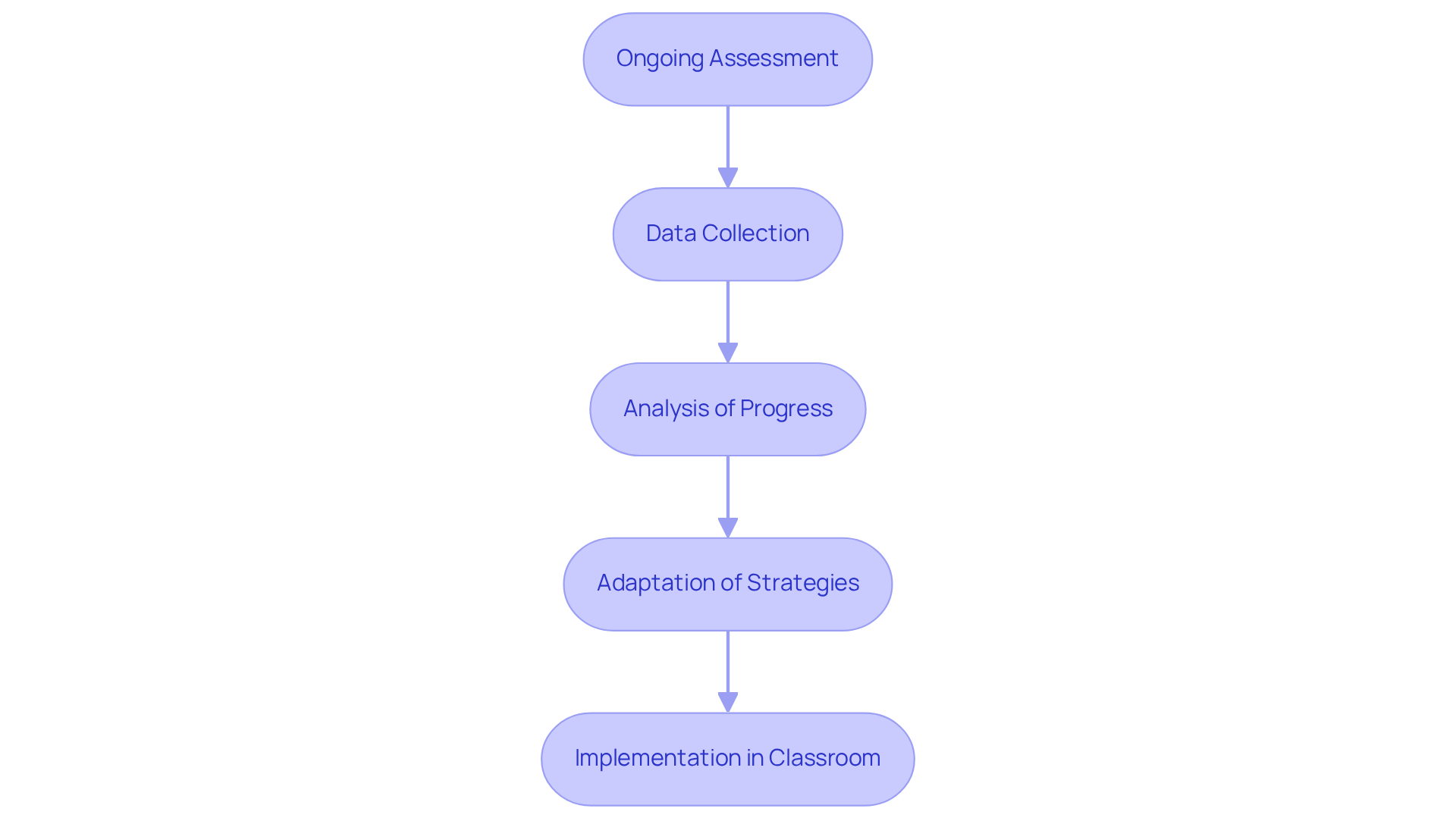
The strategies outlined for enhancing ABA learning and student engagement reveal a comprehensive approach that emphasizes the importance of tailored methods in education. By integrating techniques such as Discrete Trial Teaching, Naturalistic Teaching, and Pivotal Response Treatment, educators can create dynamic learning environments that resonate with the unique needs of each student. The focus on individualized interventions and ongoing assessments further highlights the necessity of adapting teaching strategies to foster engagement and achieve optimal educational outcomes.
Key insights illustrate how various methods—ranging from Token Economies to Visual Supports—can significantly motivate and involve students in their learning processes. Each strategy not only serves to improve academic performance but also nurtures essential social skills and emotional well-being. The evidence supporting these approaches underscores the effectiveness of structured, engaging, and personalized learning experiences in ABA education.
Ultimately, the call to action is clear: educators and institutions must embrace these innovative strategies to transform the learning landscape for students in ABA settings. By prioritizing engagement through tailored interventions and continuous assessment, the potential for positive outcomes expands, paving the way for a brighter future in education. Investing in these methods is not just beneficial; it is essential for fostering a generation of learners who are motivated, engaged, and equipped for success.
What is Hire ABA and what does it offer?
Hire ABA is a specialized recruitment platform that connects Board Certified Behavior Analysts (BCBAs) with job opportunities in the field of ABA learning. It streamlines the hiring process, helping professionals find roles that match their expertise and career goals.
Why is there a demand for BCBAs?
The demand for Board Certified Behavior Analysts is projected to grow by 22% through 2031, indicating a significant need for qualified professionals in this field.
What challenges do employers face in hiring BCBAs?
76% of employers report difficulties in filling open BCBA positions, highlighting the challenges in locating suitable candidates in this specialized area.
How does Hire ABA benefit both job seekers and employers?
Hire ABA enhances the job-seeking experience for professionals and aids employers in quickly finding the right candidates, fostering a more engaged and productive workforce in the ABA learning therapy sector.
What is Discrete Trial Teaching (DTT)?
Discrete Trial Teaching is a method used in skill acquisition that breaks down complex skills into manageable components through a systematic five-step process: Antecedent (instruction), Prompt (guidance), Response (learner's answer), Consequence (feedback), and Inter-trial interval (break).
What are the benefits of implementing DTT effectively?
When DTT is effectively implemented with active caregiver participation, up to 90% of individuals can achieve substantial progress. It enhances learner engagement and helps students transfer skills across various contexts.
What role does the learning environment play in DTT?
A well-organized educational setting with calm areas and visual aids fosters greater involvement and engagement among learners, making it easier for them to understand objectives and receive timely feedback.
What is Naturalistic Teaching?
Naturalistic Teaching is an approach that uses everyday situations to teach skills within meaningful contexts, enhancing student engagement and promoting spontaneous interaction.
How does Naturalistic Teaching impact students with autism?
Research shows that Naturalistic Teaching strategies lead to significant improvements in communication, social abilities, and adaptive behavior among children and teens with autism, facilitating a deeper understanding of skills.
Can you provide examples of Naturalistic Teaching?
Examples include integrating teaching moments during routine activities like meals or play, which transforms these experiences into meaningful educational opportunities.
Our expert recruitment strategies and AI-driven sourcing ensure that you receive top-notch candidates quickly, without compromising on quality. Whether you’re looking for BCBAs, Clinical Directors, or RBTs, we’ve got you covered.